Exercise 8

1. Nos Consules Civitatis Kazymirie etc Notum facimus omnibus hanc litteram legentibus vel
2. audientibus Quod Nos Consules convocare fecimus nostre Civitatis concives seniores memores
3. primeve plantacionis seu fundacionis Kazymiriensis Civitatis exigentes ab eisdem sub iuramento
4. Quod hactenus nostre Civitati fecerunt Quatenus odio et amore postposito nos informarent
5. an recordarentur si umquam domus vel aree alique inter terminos seu grenicies monasterii nunc
6. Sancte katherine Ordinis fratrum Heremitarum Sancti Augustini fuerunt censuales alicui Altari
7. Capelle vel Canonie Castri Cracowyiensis
Principles of transcription
- Maintain the original entry - carry out the transcription as faithfully as possible to the original, without correcting the writer's mistakes.
┬Ā - Lines of text - the transcription should be written in lines (fragments in grey should be omitted). If the word is divided between two lines, it should be written as in the original, that is, without connecting it.
┬Ā - Punctuation - all punctuation marks or others (e.g. commas, full stops, hyphens, etc.) appearing in the original should be ignored.
┬Ā - Writing capital letters - the mechanism recognises both small and capital letters as correct.
┬Ā - Contractions - a contraction used by the writer should be written in full. Do not use square brackets to designate additional letters, complementing the contraction.
┬Ā - The letters u and v - in Latin texts they are often exchanged or written in an identical way. While transcribing, the actual, phonetic sound of the word should be used.
┬Ā - The letter ┼Ė (y with dots or dashes) - should be written as ii (double short i).
┬Ā - The combination of letters qu - we always write as qu.
┬Ā - The letter w - we always write as w.
┬Ā - Multiple letter f at the beginning of a word - it should be written only as f.
┬Ā
You can find the full principles of transcription here.
Helpful tips
-
This document contains many contractions, so it is worth taking a look here in order to read more about the principles of contracting words. It is also possible to choose a short-cut - click Abbreviations to find tips concerning short-cuts from this document.
- Remember about how the letter y was written in the past - with one or two dots (this scribe preferred to use dashes instead of dots).
┬Ā - The scribe who prepared this document wrote the letter a in various ways. Deciphering the letter should not cause problems, but it may be difficult to interpret which of them is a large A. Please remember, however, that the mechanism for checking the accuracy accepts both forms as correct.
┬Ā - The scribe sometimes used a multiple letter f at the beginning of a word.
┬Ā - The scribe used the letters l, r, t and s in various versions.
┬Ā - The most fantastic letter this scribe used, in our opinion, is the letter Q, which also appears in two versions.
┬Ā
You will find more useful tips for transcribing old texts here.
┬Ā
Exercise 8
Model letters


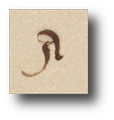




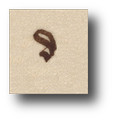
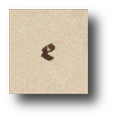



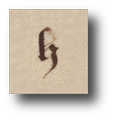


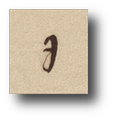

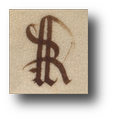



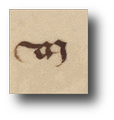

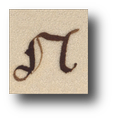

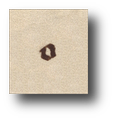



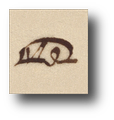
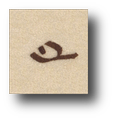



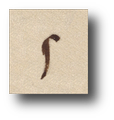
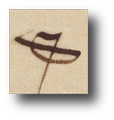









Exercise 8
Abbreviations
![Civitat[is]](https://dawnepismo.ank.gov.pl/files/practice/shortcuts/aufgabe-8/cw08civitatis.png)
![co[n]cives](https://dawnepismo.ank.gov.pl/files/practice/shortcuts/aufgabe-8/cw08concives.png)
![Cracowyien[sis]](https://dawnepismo.ank.gov.pl/files/practice/shortcuts/aufgabe-8/cw08cracowyiensis.png)
![fueru[n]t](https://dawnepismo.ank.gov.pl/files/practice/shortcuts/aufgabe-8/cw08fuerunt.png)
![fundac[i]onis](https://dawnepismo.ank.gov.pl/files/practice/shortcuts/aufgabe-8/cw08fundacionis.png)
![H[er]emita[rum]](https://dawnepismo.ank.gov.pl/files/practice/shortcuts/aufgabe-8/cw08heremitarum.png)
![informare[n]t](https://dawnepismo.ank.gov.pl/files/practice/shortcuts/aufgabe-8/cw08informarent.png)
![Int[er]](https://dawnepismo.ank.gov.pl/files/practice/shortcuts/aufgabe-8/cw08inter.png)
![kathe[r]ine](https://dawnepismo.ank.gov.pl/files/practice/shortcuts/aufgabe-8/cw08katherine.png)
![Kazymir[iensis]](https://dawnepismo.ank.gov.pl/files/practice/shortcuts/aufgabe-8/cw08kazimiriensis.png)
![litt[er]am](https://dawnepismo.ank.gov.pl/files/practice/shortcuts/aufgabe-8/cw08litteram.png)
![Notu[m]](https://dawnepismo.ank.gov.pl/files/practice/shortcuts/aufgabe-8/cw08notum.png)
![om[n]ibus](https://dawnepismo.ank.gov.pl/files/practice/shortcuts/aufgabe-8/cw08omnibus.png)
![plantac[i]onis](https://dawnepismo.ank.gov.pl/files/practice/shortcuts/aufgabe-8/cw08plantacionis.png)
![p[ri]meve](https://dawnepismo.ank.gov.pl/files/practice/shortcuts/aufgabe-8/cw08primeve.png)
![Quat[enus]](https://dawnepismo.ank.gov.pl/files/practice/shortcuts/aufgabe-8/cw08quatenus.png)
![recordare[n]tur](https://dawnepismo.ank.gov.pl/files/practice/shortcuts/aufgabe-8/cw08recordarentur.png)
![S[an]c[t]e](https://dawnepismo.ank.gov.pl/files/practice/shortcuts/aufgabe-8/cw08sancte.png)